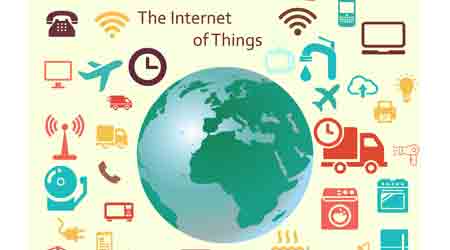IoT Is Next Step for Facilities, but Understanding and Trust Must Catch Up
First of a 4-part article on Building Internet of Things (IoT) benefits for facility managers, occupants, tenants
It is widely considered a foregone conclusion that the Building Internet of Things (IoT) is the next step in facility management. Already, manufacturers have developed a plethora of ever more capable sensors, and solutions for control and interoperability, which not too long ago seemed part of a far-off Jetsonian future, are possibilities for today. But there is a disconnect in the industry between what is possible and what is being done, as facility managers are still working on understanding, and trusting, the Building IoT.
In a recent report, McKinsey & Company estimates that the Internet of Things offers a potential economic impact of at least $4 trillion by 2025. In facilities, this is based on anticipated impact to operations management, layout optimization, and equipment maintenance, among other factors. While there are many layers to consider, the Building IoT undeniably holds great promise for both facility managers and facility occupants.
Of course, a significant amount of building automation technology has already been deployed in commercial facilities, but what Building IoT represents is an acceleration of the integration of systems to create lower operating costs and improve the functionality of buildings, says Ronald Zimmer, president and CEO of the Continental Automated Buildings Association. Paraphrasing research from Harvard, he says, “The goal is to ultimately integrate intelligent devices with network systems that are self-sensing, self-controlling, and self-optimizing, all automatically, all without human intervention.”
This does not mean that facility managers will be out of a job. Rather, it means that the tools for leaner, more efficient, and more predictive operations will soon be at their fingertips.
IoT Lets Occupants Provide Real-Time Feedback
The Building Internet of Things can enable occupants to provide real-time feedback about building conditions, which can provide greater levels of comfort and control.
Several software packages on the market today allow occupants to use their smartphones to report whether they’re hot, cold, or just right, as well as other building requests, like trash pickup or something not working properly.
“You’ll have direct occupant interaction with building systems,” says Dev DuRuz, senior consultant with Paladino and Company. “They may not have direct control, but can input immediate feedback. This more fluid, continuous feedback loop will result in richer data sets for faster control.”
These packages also often include cloud-based analytics or trend modules to plot and analyze systems, for example HVAC or lighting energy. “The number one reason tenants don’t renew leases is environmental controls,” says DuRuz. So the Building IoT can be a major tool for tenant relations, he says.
— Greg Zimmerman
Related Topics:















